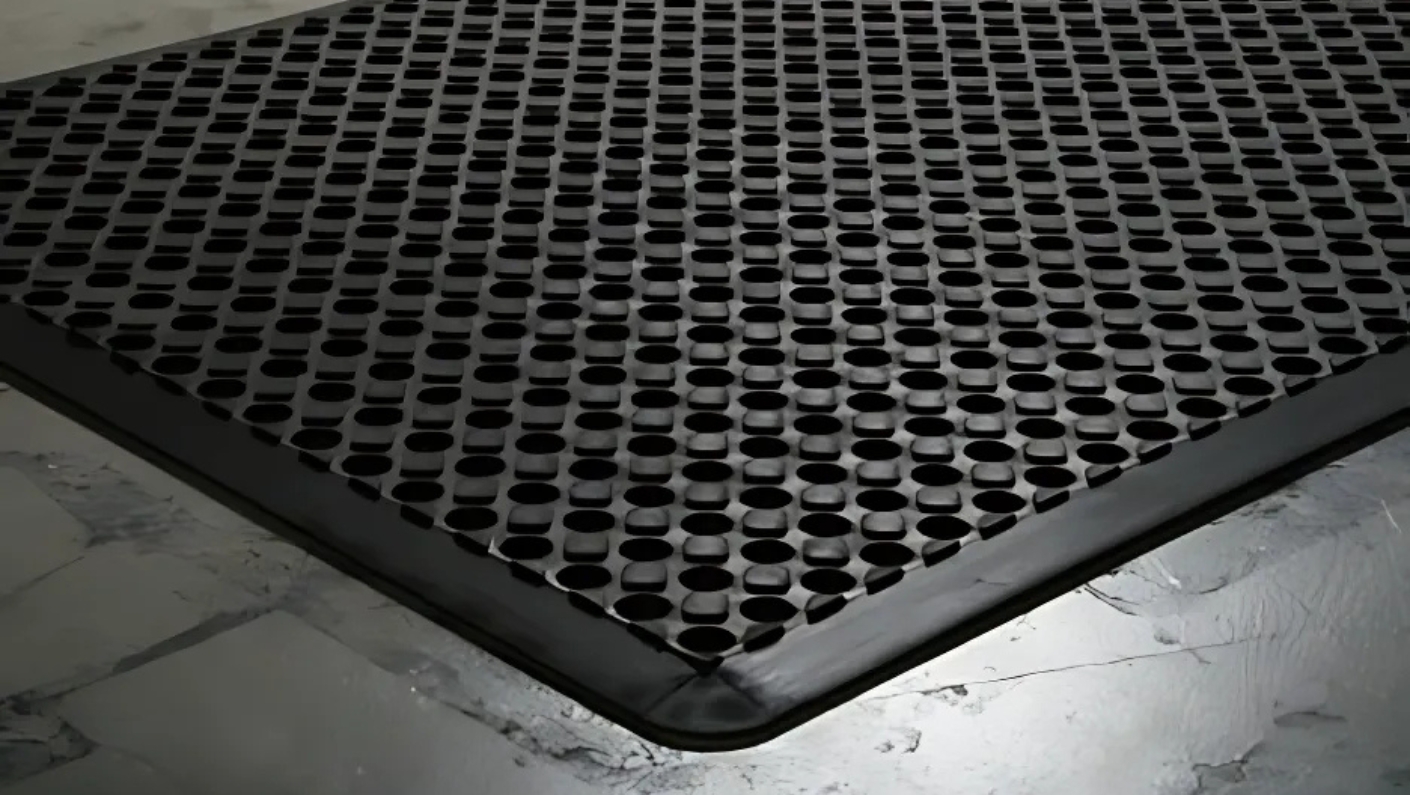With regular wet weather conditions this winter, it’s the perfect time to revisit workplace safety protocols—especially those related to your floors. While many businesses prioritise obvious hazards, the condition and support of your flooring can make a significant difference in employee well-being and productivity. Here’s a quick checklist to help you assess and improve floor safety in your workplace:
1. Inspect for Slip Hazards
- Check for spills, debris, or moisture: Regularly inspect floors for anything that might cause slips or falls, especially in high-traffic or wet areas.
- Evaluate matting: Ensure mats are clean, non-slip, and properly positioned to reduce the risk of accidents.
2. Assess Flooring Condition
- Look for cracks, holes, or uneven surfaces: These can cause trips and falls, so address any damage promptly.
- Examine mat edges: Torn, curled, or missing bevels on mats are tripping hazards—replace or repair as needed.
3. Prioritize Ergonomic Support
- Consider standing time: Employees who stand for long periods are at greater risk of fatigue and joint pains.
- Use anti-fatigue mats: These mats provide cushioned support, encouraging subtle movements that boost circulation and reduce strain on the legs, feet, and lower back.
4. Integrate Safety-Focused Matting Solutions
- Choose the right mats: Look for durable, slip-resistant mats with bevelled edges to minimise tripping hazards.
- Safety-focused Mats: Solutions like anti-slip and anti-fatigue mats play a vital role in preventing falls and supporting overall worker well-being, making them a smart addition to any workplace safety strategy.
Don’t overlook your floors when updating your June safety checklist. By addressing slip hazards, supporting ergonomics, and reducing fatigue, you’re not just preventing accidents—you’re investing in a healthier and more productive workforce.

